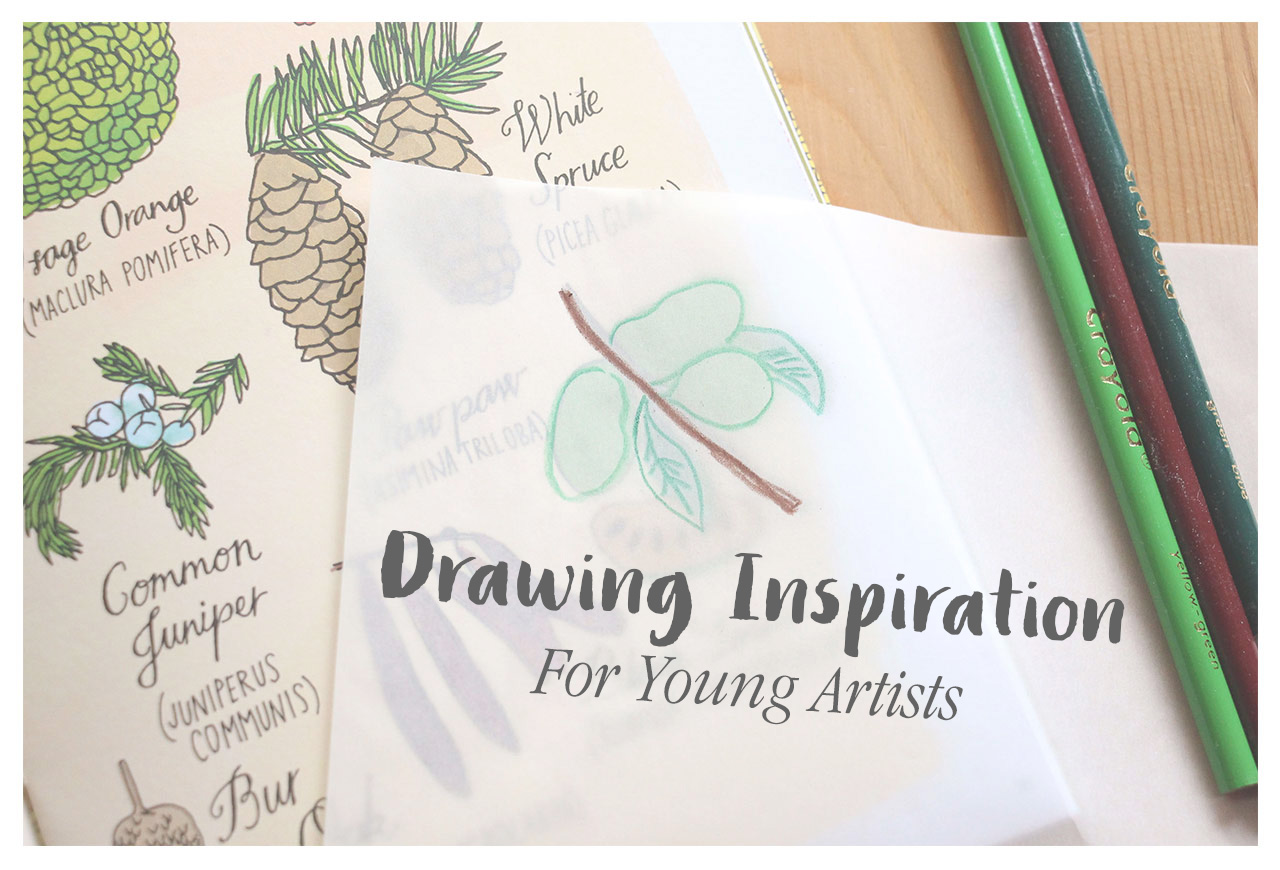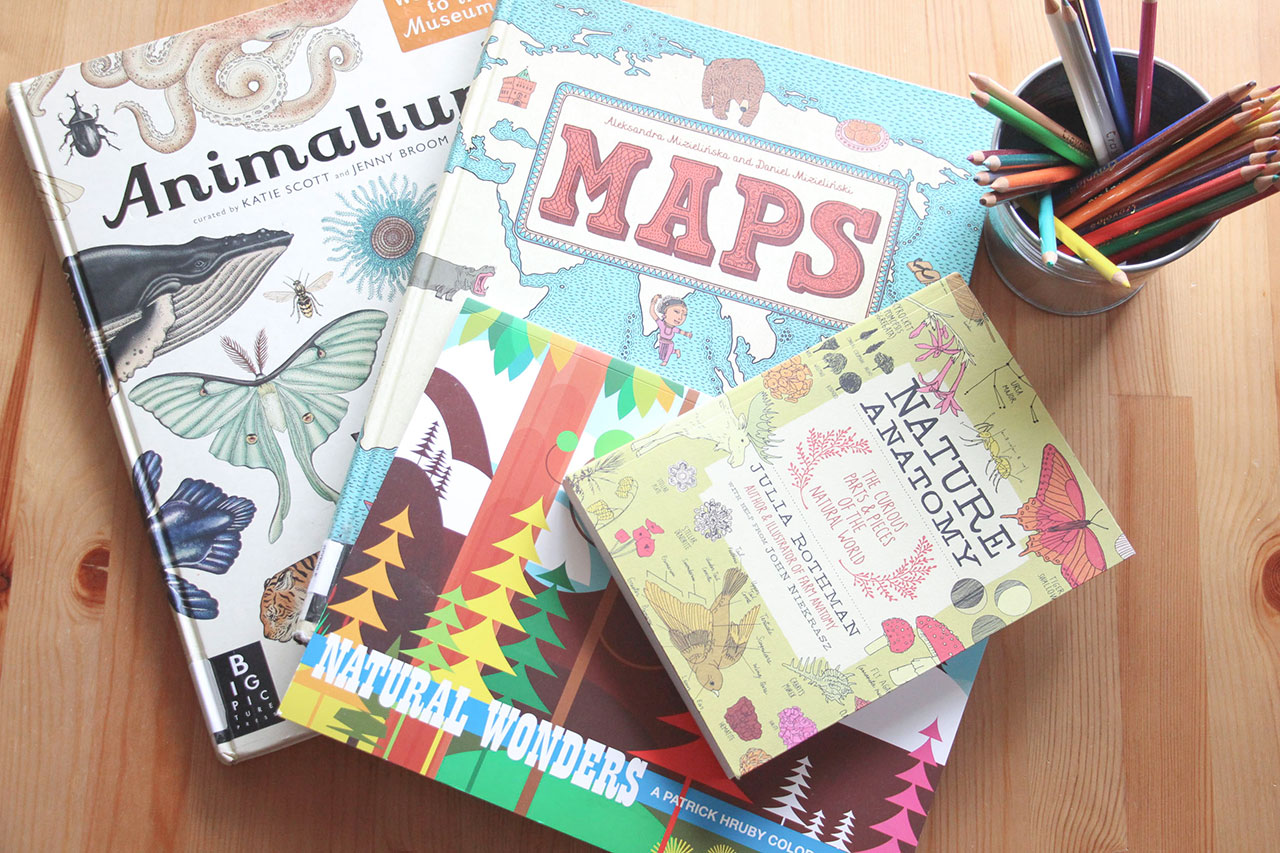Drawing Inspiration for Young Artists
 I have a confession—I’m an art teacher that doesn’t think she can draw. ??!! Now before you think you need to report me to the Art Teaching Officials, I should also say that I primarily teach four year-olds, in an art museum setting, and we spend most of our art-making time on the process rather than the product. So really, it’s the perfect crowd for me to be teaching. But still, there’s a part of me that thinks that I should be better at drawing.
I have a confession—I’m an art teacher that doesn’t think she can draw. ??!! Now before you think you need to report me to the Art Teaching Officials, I should also say that I primarily teach four year-olds, in an art museum setting, and we spend most of our art-making time on the process rather than the product. So really, it’s the perfect crowd for me to be teaching. But still, there’s a part of me that thinks that I should be better at drawing.
Do you struggle with encouraging your children to draw because you secretly worry that you can’t practice what you preach? Luckily, a young child’s natural curiosity alone is usually enough to encourage her to pick up a pencil or crayon and explore making marks on paper. Your own willingness to explore something new, make mistakes, and try again alongside your child teaches important lessons about individuality, persistence, and self-discovery. But as children get older, they will increasingly become fixated on things “looking right.” And it’s then that us non-drawers begin to quake!
I’m still no expert on the sketch pad, but I’ve found some useful tools that help build my own confidence and work equally well as fun activities for kids.
- Books: Find inspiration in beautifully illustrated books. Drawing from real life is sometimes too daunting (and not practical), but looking at how another artist has successfully rendered an animal, plant, or landscape can give you ideas for how to go about it yourself. Animalium by Jenny Broom and Katie Scott is a lush volume covering the entire animal kingdom. Nature Anatomy by Julia Rothman offers gorgeous watercolors of plants, insects, land formations, snowflakes, and more in the style of an anatomy textbook. Maps by Aleksandra and Daniel Mizielinski is perfect for the map-obsessed kid, showing not only outlines of countries, but also detail drawings of animals, famous buildings, natural formations, citizens, food, and flags of places all around the world. Simply open up a book, and start to sketch from the pictures.
- Tracing Paper: Use tracing paper to learn in a very concrete way how parts relate to whole, how to arrange objects in space, how to create depth in your drawings and more. Again, books can act as the expert while you or your child takes on the role of apprentice. Understanding how it feels to draw a certain object—how to hold your pencil, how much pressure to apply on the paper, how to move across the surface—takes a combination of perception and muscle memory. Artists throughout time have often learned their craft by first copying the masters. It’s not cheating for us to do the same! I like to first trace from a favorite illustration, then practice again on my own. Once I feel like I better understand the mechanics of drawing a flower or bird, I can branch out and try sketching my own versions. Teacher Tip: With children, I take the time to explain the difference between practicing a skill and copying another’s work.
- Coloring Books: Pull out the coloring books! We’re too quick to put the coloring books away once children are elementary school age, but the satisfaction of creating a complete “drawing” doesn’t diminish with age. (In fact, I got distracted while writing this blog post, and just had to finish coloring my frog!) Amp up your drawing game by selecting coloring books inspired by graphic artists and illustrators. The two I have on my desk right now are Natural Wonders: A Patrick Hruby Coloring Book and Charley Harper’s Coloring Book of Birds. Although the coloring pages are obviously meant to be filled with color, they can also act as guided drawing practice. These two in particular emphasize how geometric shapes can be manipulated to look like everything from foxes and frogs to whales and wrens.
So grab your pencils and sketch pads, take a deep breath, and dive into drawing with your child!


